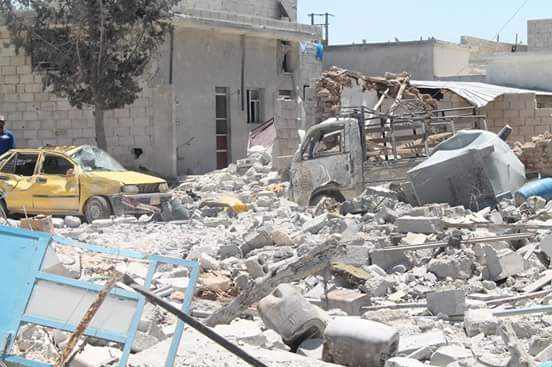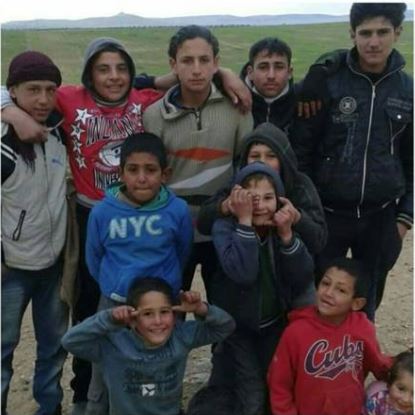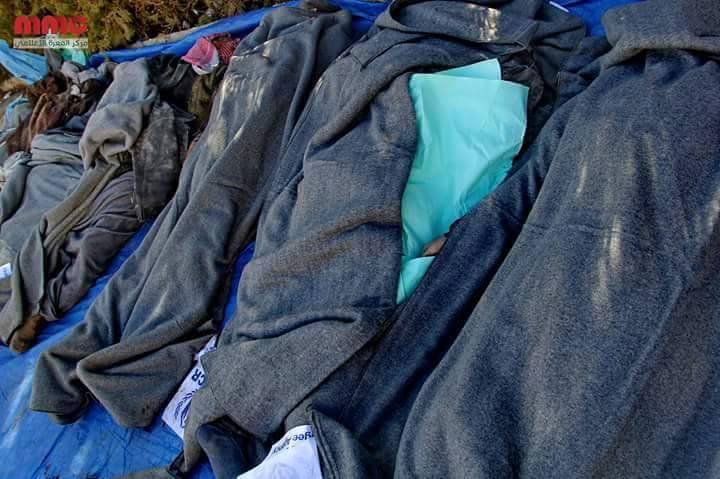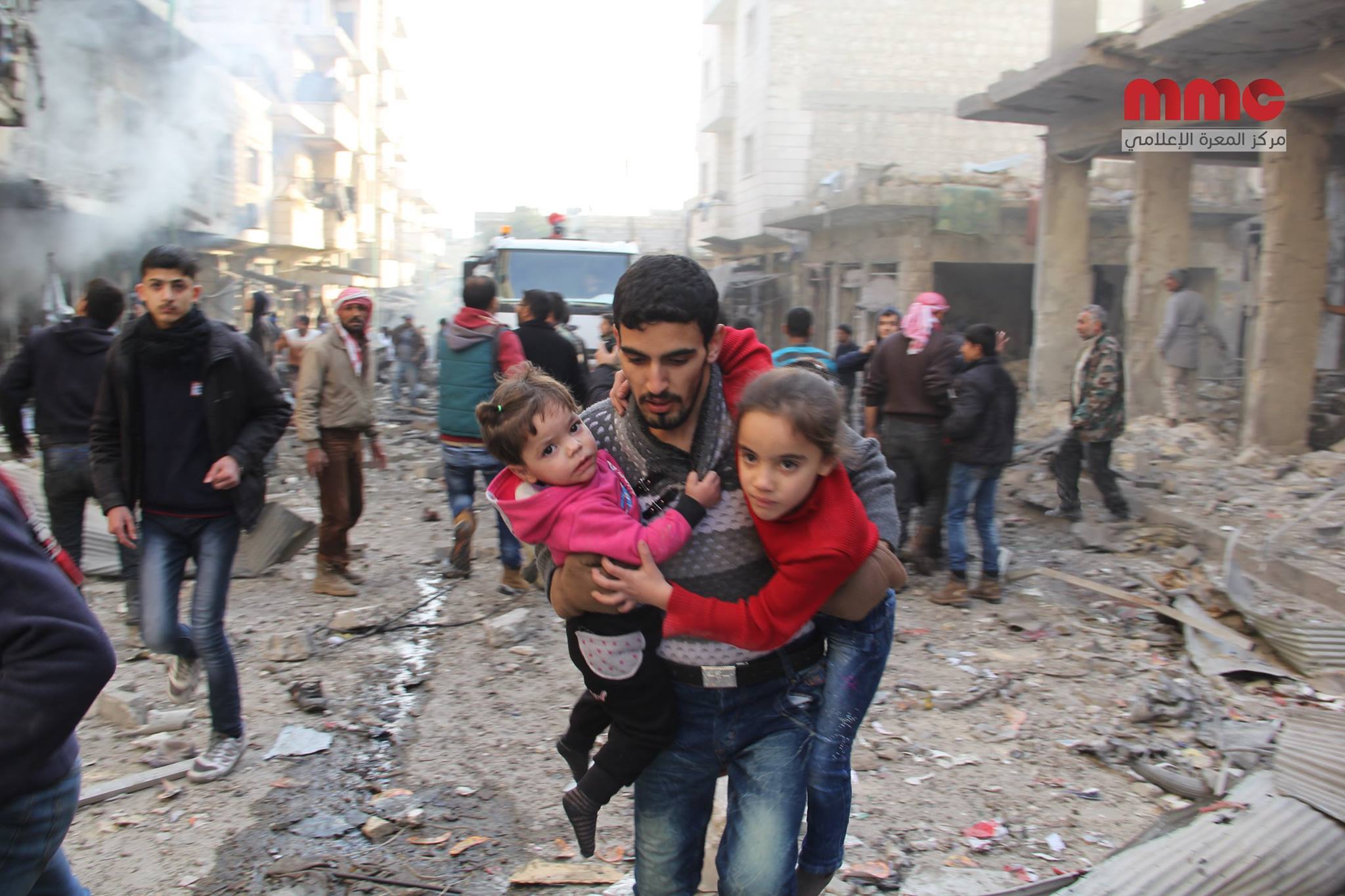ISIL consistently lost territory in Iraq and Syria during 2016, seeing its self-proclaimed caliphate shrink dramatically under continuous assault from multiple parties. Yet military gains by the US-led Coalition and its allies came at significant cost to civilians on the ground. The number of likely non-combatant deaths from Coalition airstrikes rose by 70 percent compared to 2015, to between 1,237 and 1,901 civilians estimated killed during the year. By the end of December, with the battle for Mosul and the offensive to reclaim Raqqa now underway, civilians were at their greatest risk yet.
Russia’s own Syria campaign to aid the regime of Bashar al Assad also left thousands of civilians dead, in the lead up to Aleppo’s complete capture from rebels in December. Even so, after more than 15 months of airstrikes Moscow has yet to admit a single civilian fatality from its own actions.
The 2016 Coalition campaign in figures
From January 1st 2016 to the end of December 2016, there were 7,779 reported Coalition airstrikes against ISIL. Of these strikes, 4,627 strikes (60%) were in Iraq and 3,152 in Syria.- a marginal increase of 0.6% on the 7,731 strikes reported for 2015.
The 13 allies had between them cumulatively dropped 30,743 bombs and missiles against ISIL in 2016. Weapon releases were up 7% on the total for the previous year – perhaps a better guide to the intensity of the air campaign.
The US remained the dominant partner, with airstrikes carried out by Washington significantly outweighing those conducted by Coalition allies. From January 1st to December 28th, CENTCOM had reported a total of 3,054 US strikes in Iraq – 67 per cent of all Coalition actions there. The UK was the next most active partner in Iraq, followed by France and the Netherlands.
While in Iraq there was a 12% decrease in Coalition airstrikes on the previous year, there was a 27% increase in actions reported in Syria over 2015. For January 1st to December 28th, the US has reported 2,969 strikes in Syria, or 95% of all declared actions. Just 141 Syrian strikes were carried out by the US’s allies in 2016: France, the UK, Canada, Australia, Saudi Arabia, Turkey, the United Arab Emirates and possibly Jordan.
Coalition transparency and confirmed deaths
The twelve months from January 1st to December 31st 2016 saw a dramatic jump in reported civilian deaths from Coalition airstrikes. A total of between 2,932 and 4,041 non-combatant fatalities are alleged for 2016, stemming from 445 separate claimed Coalition-caused incidents in both Iraq and Syria, according to Airwars tracking.
From 7,779 declared airstrikes during 2016, the Coalition has itself so far admitted to killing 141 non-combatants in 42 separate casualty events, of which 23 incidents were in Iraq and 19 in Syria.
This is three times the 47 civilians that the Coalition has officially admitted killed between August 2014 and December 2015. All admitted casualties to date are a result of what US and Coalition officials say were American airstrikes.
After reviewing those events admitted to by the Coalition in 2016, Airwars believes that the actual likely death toll from those 42 incidents is at least double the Coalition’s own figure. Based on public reporting, Airwars researchers estimate that between 285 and 530 civilians were in fact likely killed in 2016 incidents admitted to by the US, of which 109-189 deaths were in Iraq and 176-341 were in Syria.
For example, in an event confirmed on December 1st, the Coalition has admitted to inadvertently killing 15 civilians at Al Ghandourra village near Manbij, Syria on July 28th. It says that a vehicle was struck “after it slowed down in a populated area after the munition was released”. Yet credible reports monitored by Airwars put the death toll from that event much higher – at up to 41 non-combatants killed, of which up to 10 were children. According to reports, the noon strikes by US aircraft hit both the main market and an elementary school in the town.
There is clearly still much room for improvement in Coalition casualty reporting. That said the year saw important improvements in CENTCOM’s reporting of civilians deaths, for example by working with external casualty monitors and NGOs – as discussed in length in Airwars’ recent transparency audit. We also welcome the decision by the Coalition to move to regular monthly reporting on civilian casualties.
Despite conducting over 3,700 airstrikes between them to December 2016, none of the US’s twelve allies have yet admitted killing any civilians in Iraq or Syria. This is an improbable assessment given the intensity of the ongoing air war, and our understanding of casualty estimates from recent conflicts – with the risk that allies are using their membership of the Coalition to evade responsibility for their own actions.
A 70% rise in likely fatalities and a tripling of injuries
Alongside the 42 incidents so far admitted by the Coalition for 2016, Airwars has additionally identified a further 182 ‘Fair’ casualty incidents in which civilians died. An event is assessed as fair when it has two or more credible sources, and where Coalition strikes are confirmed to have taken place in the near vicinity.
Between 952 and 1,371 additional civilians were likely killed in these Fair incidents in 2016. Of these victims, between 254 and 290 were children and between 137 and 149 were women.
Overall, between 1,237 and 1,901 non-combatants were likely killed in 2016 events graded by us as either Fair or Confirmed – compared to between 722 and 997 civilians who likely died across such events in the previous year. This represents a 70 per cent increase in civilian deaths over 2015 – an indication of the increasingly urban nature of the Coalition’s air war against ISIL.
The year saw the most significant and intense Coalition campaigns yet – July’s Manbij offensive was followed by the advance on Raqqa four months later in Syria. In Iraq, the Anbar offensive of May and June anticipated the long-awaited battle for Mosul.
As advances were made into more densely populated areas, civilian deaths climbed steeply. Acknowledging this, Denmark released a frank statement – ‘The risk of civilian casualties‘ – saying that its aircraft may have to fly bombing missions where civilian casualties could not be avoided. The year also saw a near tripling in the number of non-combatants hurt in Coalition events, with between 1,688 and 1,969 civilians likely injured according to credible reports.
Syria: a doubling in likely deaths
Syria’s civilians were under constant threat from Coalition air strikes throughout 2016, with 38% more casualty events reported in Syria than Iraq over the year. This may however reflect improved local reporting by Syrian monitors.
Overall, minimum likely civilian deaths in Syrian incidents graded by Airwars as Fair or Confirmed doubled in 2016. Across 136 incidents, between 654 and 1,058 civilians were claimed killed in total. Airwars estimates that a minimum of 818 civilians were likely injured in Fair and Confirmed events in Syria alone.
While reported fatalities were relatively low in January, there was a 56% jump in likely deaths in February, as the Coalition’s preferred ground proxies the Syrian Democratic Forces prepared to make the first significant gain of the year by seizing the town of Shadadi in Hassakah governorate from ISIL.
In a major incident on February 17th-18th, between 15 and 40 civilians including the families of Ayed Zeib, Khalaf Al Hussein, Hamdan Khalfan al Ali and the Tahmaz family, likely died in alleged Coalition strikes on the ISIL-controlled villages of Al Hadadiya, Tayrkham and Al Haleel near Al Shadadi. According to a report by the Damascus Center, strikes hit “houses inhabited by unarmed civilians”. It added that 70 people were also injured.
Bigger spikes in Coalition civilian casualties were to follow – in June and July with the Manbij campaign; and in the assault on Raqqa province from November onwards.
“These spikes show that whenever there is a military push to remove ISIL from a city, civilians are at significantly increased risk of harm,” says Kinda Haddad, head of the Airwars Syria team. “It is inevitable because centers like Manbij and Raqqa are full of civilians – and ISIL is in these centers.
“ISIL aren’t fighting on a frontline where you can isolate them and attack them. Their headquarters are in the middle of the cities. These may be legitimate military targets, but they are positioned in crowded civilians centres, so the likelihood of civilian deaths – whether that be passers by or those living in the buildings – is high.”

Destruction at Kaljibrin following a reported Coalition strike, May 27th (via Syrian Network for Human Rights)
Manbij: high casualties
As the noose tightened around the key northern Syrian town of Manbij from May onwards, civilians faced an increasingly dire situation.
By early summer the Coalition had refocused much of its air power onto Syria – leading to a 110% increase in airstrikes in the country. The effect on civilians was immediate, with likely deaths near-quadrupling between May and June. Conversely, likely civilian deaths in Iraq durng the same period tumbled.
In a year which saw Airwars listing the names of 1,027 civilians reportedly killed by the Coalition, we saw the continuance of a disturbing trend – the deaths of entire families. For example, Airwars has published the names of 27 victims – including 18 children from the Sqar family – who died in alleged Coalition strikes on the village of Kaljabrin, Aleppo on May 27th, alongside a major assault by ISIL. The Coalition has yet to assess this incident, as far as we know.

Reported child victims of a Coalition strike near Manbij on June 3rd 2016 (via Manbij Mother of the World)
In another such event on June 3rd in Ojkana, Manbij, 22 civilians including 13 children died when the Coalition allegedly launched raids on ISIL positions. The Syrian Revolution Network named multiple deaths from the families of Saad Allah Al Hussein al Hilal, Bahjat al Hussein al Hilal and Fouad al Hussein al Hilal. This events is also not known to have been been assessed or investigated by the Coalition.
Manbij was eventually liberated on August 15th, but not before the campaign had led to the highest civilian death tolls yet seen in the two-year war. The worst incident by far occurred on July 18th in the nearby village of Tokhar.
Local group Manbij Mother of All The World was the first to report the event, initially noting 25 or more fatalities. The group quickly raised the death toll to 56 then 59 civilians, eventually reporting that as many as 203 non-combatants had died. Other sources have placed the fatality range in the lows 100s.
The US later accepted responsibility for the event – saying that its warplanes had killed an estimated 24 civilians. This figure, however, was far below Airwars’ own tally. Based on credible reports, we estimate that between 78 and 203 civilians died in this catastrophic event, including up to 59 children and 27 women. A further 30 non-combatants were likely injured. We presently list the names of more than 90 of the victims – including 12 families.
The Coalition too accepts civilians paid a price at Manbij – so far admitting responsibility for five civilian casualty events occurring in or near the town between July 3rd and August 20th 2016. These Manbij events alone count for one third of all 141 deaths conceded by the Coalition across Iraq and Syria for the whole year.
Raqqa: another spike in civilian casualties
The capture of Manbij helped lead to a steep drop in reported civilian casualties from Coalition actions in Syria in August. However with the Syrian Democratic Forces (SDF) advance on Raqqa officially announced on November 7th, fatalities mounted once more. Even before Raqqa itself was assaulted, hundreds of civilians had credibly been reported killed in surrounding towns and villages as the Coalition and SDF pushed forward.
The Coalition declared 151 airstrikes in the vicinity of Raqqa in December – a 152% increase over November. Civilians were immediately at greater risk, with a minimum of 71 likely killed by the Coalition in Syria during the last month of 2016 – most in Raqqa governorate.
Once again, Airwars tracked the deaths of whole families. On December 9th, up to 32 non-combatants were likely killed – and 20 more injured – in alleged Coalition airstrikes on the village of Ma’yezila in northern Raqqa. According to Riba FM, the strike occurred near the Alh mosque. Raqqa News reported that “Al-Ma’yezila’s population is less than 300 and they all have the same grandfather. More than 28 martyrs were killed, around 10% were killed. This is genocide.” Among the victims named by Raqqa News Network were eight members of the Al-Afir family.
The year repeatedly saw civilians facing an impossible situation in Syria, concludes Kinda Haddad: “Whenever there was a big military push we saw civilians trying to escape, to leave their villages – but some can’t leave, and ISIL won’t allow them to leave Raqqa. And where do they go? They may manage to flee to a village near Raqqa, but wherever they find refuge is going to be another ISIS area, which will be a target sooner or later.”

Ismaeil Al-Ahmad Al-Shinan, his bother Mahmood and his child Abdur-Rahman – killed in a reported Coaltion strike on December 9th 2016 (via Raqqa News Network)
Iraq: likely deaths rise by 50%
ISIL suffered major defeats throughout 2016, losing control of Hit in April, Rutbah in May and Fallujah in June – so preparing the way for the Battle of Mosul in October.
But these military gains came at a high cost to civilians. Overall, minimum likely deaths in Iraqi incidents graded as Fair or Confirmed increased by 48% in 2016 on the previous year. Across 88 incidents Airwars estimates between 583 and 843 civilians were likely killed by the Coalition in Iraq.
“The year’s major offensives, accompanied by huge air strikes by the Coalition and the Iraqi air force, have seen any area where ISIS are suspected to be present being targeted,” says Airwars’ researcher. “Markets, factories and banks have repeatedly been struck – all because intelligence said that members of ISIS were there. Yet often this intelligence proved to be inaccurate and left civilians dead.”
In April – a month in which President Obama announced an acceleration in the Coalition campaign – we saw a big spike in deaths, with a minimum of 91 civilians killed in events assessed as likely and confirmed. Children paid a high price, with at least 28 likely killed during the month. Of 22 claimed incidents in April, 68% were near Mosul.

Kamal Hatem, reportedly one of the victims of a Coalition strike near Mosul, May 25th 2016 (via Liberation Brigades)
Civilian infrastructure also continued to take significant damage. On May 25th, in an incident later confirmed by the Coalition, at least six non-combatants likely died and up to 25 were injured when a shopping mall in the Al Rashidiya region, north of Mosul was struck.
The US later admitted to causing casualties that day, noting that “near Mosul, Iraq, during a strike against an ISIL tactical unit, it is assessed that one civilian was killed.”
From July to September, Airwars tracked a sharp fall in likely deaths in Iraq – most likely a result of US airstrikes being redirected to Syria. However between September and October Iraq strikes had more than tripled, with the announcement of the battle for Mosul on October 17th.
By the end of November, during which Iraqi Security Forces (ISF) moved into the city’s more populated eastern districts, Airwars reported that significant numbers of civilians had already been credibly reported killed from Coalition airstrikes and artillery. In contrast with the assault on Aleppo by Syrian and Russian forces, almost no international media coverage was given to deaths from likely Coalition actions in Mosul.
In December, Airwars tracked 16 alleged incidents in Iraq – of which 69% occurred in Mosul. Between 76 and 100 civilians likely died in these events, making this the worst month for fatalities in Iraq since April. Injuries were also at a record level, with a minimum of 242 civilians likely injured in Mosul.

Image reportedly of victim Ghani Mumtaz, killed in an alleged Coalition airstrikes on Mosul, Dec 11th Posted by @ali3omar
On December 11th an alleged Coalition raid on the Al-Falah neighborhood killed eight members of the same family. Several news outlets named the victims as Ammar Mumtaz Abdullah and his wife Lina and children Ahmed and Abdul Rahman; Mumtaz Mustafa Abdullah and the wife of his son Mohammed, and his daughter Ghani Mumtaz.
Several major mass casualty incidents occurred within the last days of the month. On December 29th, local sources reported the deaths of up to 41 civilians with 143 injured in the eastern districts of the city from alleged Coalition strikes in support of a renewed push against ISIL. On the same day – in an incident currently under investigation by the Coalition – up to 16 civilians reportedly died when the Coalition struck a van carrying ISIL fighters in what CENTCOM “later determined to be a hospital compound parking lot” in Mosul. Local sources said this was a children’s hospital.
The following day, December 30th, locals reported the death of 11 more civilians and the injuring of up to 80 more, when Coalition warplanes allegedly struck the vicinity of the Khalid ibn al-Walid Mosque in the Wadr Hajar area of Mosul.
“This is a civilian disaster,” says Airwars’ researcher, who has spent time on Mosul’s frontline observing how the battle has evolved.
“In October and November, military movements were well-organised and they were taking care of civilians. But now the ISF and Federal police inside Mosul is starting to move quickly – and when they encounter strong resistance from ISIL, they sometimes deal with it with heavy artillery and airstrikes. It’s about liberating the rest of the city at any price.”
Civilian casualties from Russian strikes
Airstrikes carried out by Moscow pummeled rebel-held areas of Syria throughout 2016, with many hundreds of civilians credibly reported killed.
Overall, there were 1,452 separate claimed civilian casualty events allegedly carried out by Russia during 2016. Between 6,228 and 8,172 civilians reportedly died in these events. Many of these incidents are likely to have been the result of actions by the Assad regime. Even so, civilian deaths from Russian strikes in 2016 far outpaced those from Coalition actions.
With so many allegations to assess, Airwars has a significant case backlog. We have however released our assessments for the first four months of 2016. These show that between January 1st and April 30th, an estimated 1,140 to 1,564 civilians were killed in 448 events assessed as likely having been carried out by Moscow. Of these, a minimum of 298 victims were children and at least 175 were women. Additionally, a minimum of 1,453 civilians were injured.
In January 2016 alone at least 713 non-combatants were killed, according to Airwars tracking. A subsequent ceasefire then led to a steep fall in likely deaths – though we still estimated that a minimum of 420 civilians died in February and March 2016.
Frequently, civilians died in mass casualty events. For example, on January 9th 2016 a minimum of 53 civilians died and more than 200 were injured in alleged Russian strikes on Maarat al Numan, Idlib according to numerous local sources. Activists said a courthouse and prison belonging to the Al-Nusra Front was targeted, resulting in major destruction and the deaths of all who were at the site or close by.
The Syrian Network for Human Rights initially blamed the Assad regime. But a later detailed report concluded that Russian warplanes were responsible, and that 67 people had died including three women.

Victims from airstrikes on Maarat al Numan, December 9th 2016, which the Syrian Network for Human Rights said were carried out by regime warplanes but which others blamed on Russia (via SN4HR)
A Syrian ceasefire which came into play on February 27th – followed by Moscow’s partial withdraw from Syria of its heavy bombers – had an immediate effect on likely fatalities, with a 67% drop in incidents between February and March.
By April, the intensity of Russia’s bombing campaign had further waned – showing that for a time both Russia and the Assad regime were capable of exercising a degree of restraint, which in turn diminished the risk to civilians.
Moreover, this major reduction in likely deaths from Russian strikes significantly narrowed the gap between fatalities attributed to Russian forces, and those blamed on the US-led Coalition. By April, events reportedly involving the Coalition in Iraq and Syria were just 20% less than those attributed to Russia in Syria.
“The allegations didn’t stop during the Spring ceasefire, but they dropped dramatically,” says Kinda Haddad of Airwars. “But Russia then came back with a vengeance, and the bombing has been relentless since June.” That month saw a 262% leap in alleged Russian casualty events, with claims reaching a peak of 215 incidents in November.
“In the last six moths, I have tracked hundreds of claimed Russian incidents against civilians. Most of them were deliberate, and targeted utilities such as hospitals, schools and markets,” says Airwars researcher Abdulwahab Tahhan. “Many civilians could not be identified due to the severe burns they suffered or because body parts were scattered everywhere. These allegations were recorded by activists and people still living and reporting from the ground. Unfortunately, many of theses incidents were not reported in mainstream media and when reported, the casualties were often just a number”
One of the ongoing challenges for Airwars researchers throughout 2016 has been determining which party has been bombing in Syria: Russia, the regime or the Coalition.
“With such intense fire also comes a very high level of confusion – especially between Russia and the regime,” explains Kinda Haddad. “For many incidents we have some sources blaming the regime and others Russia – and we can’t really tell who is responsible as they use similar planes and weaponry.”
The confusion was exacerbated in October when Turkey’s Operation Euphrates Shield – centered on ISIL and Kurdish forces allied to the US-led Coalition – advanced into Syria, meaning that it is likely to become more difficult to identify which actors are killing civilians in the year ahead.

Civilians attempt to flee following a strike on a market in the town of Maarat al Numan in southern Idlib, December 4th 2016. Sources blamed both Russia and the regime. (via Shaam News Network)
Airwars research team: Kinda Haddad, Latif Habib, Abdulwahab Tahhan, Eline Westra, Basile Simon, Christiaan Triebert, Samuel Oakford, F.F. Khalil, Shihab Halep, Ziad Freeman and Chris Woods
